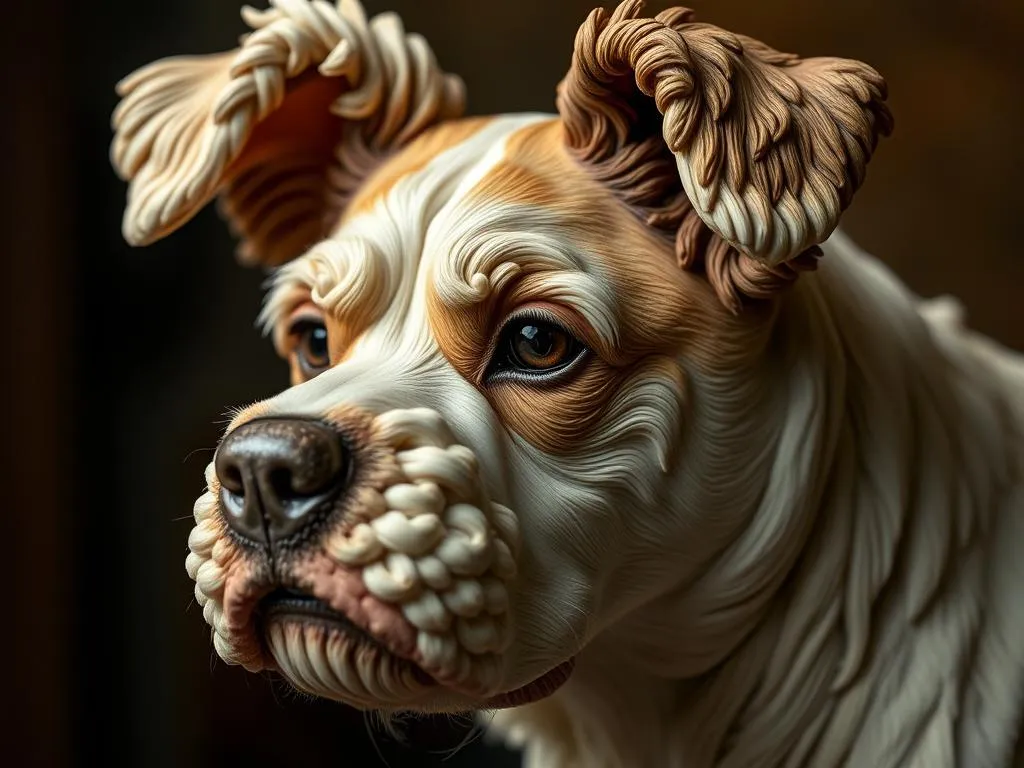
Introduction
Understanding dog breeds is essential for anyone considering adding a furry companion to their family. Each breed comes with its unique set of characteristics, behaviors, and care requirements. Among the myriad of dog breeds, the Porcelaine dog stands out as a lesser-known gem with a rich history and distinct traits. This article will delve into the fascinating world of the Porcelaine dog, exploring its origins, characteristics, and care needs, while also providing insights into various popular dog breeds.
Understanding Dog Breeds
Definition of Dog Breeds
A dog breed is defined by a group of dogs that share common ancestry, physical traits, and behavioral characteristics. These traits can include size, coat type, temperament, and even specific health issues. Understanding breed characteristics is crucial for potential dog owners, as it influences the dog’s behavior, health, and compatibility with family lifestyles.
Historical Context
The history of dog breeding dates back thousands of years, with the domestication of wolves leading to the diverse breeds we see today. Early humans selectively bred dogs for specific tasks such as hunting, herding, guarding, and companionship. This selective breeding has resulted in distinct dog breeds, each developed to excel in their particular roles. The Porcelaine dog is a prime example of how targeted breeding has led to the creation of a breed specifically suited for hunting.
Overview of the Porcelaine Dog
Breed Origin
The Porcelaine dog originates from France, where it was primarily bred for hunting purposes. Its roots can be traced back to the 18th century, and it is believed to have descended from a mix of various hound breeds. Known for its exceptional sense of smell and keen hunting instincts, the Porcelaine was utilized to hunt game such as deer and small animals. Its name, “Porcelaine,” reflects its elegant appearance, akin to porcelain in both beauty and fragility.
Physical Characteristics
The Porcelaine dog is a medium-sized breed, typically weighing between 45 to 55 pounds and standing about 20 to 24 inches tall at the shoulder. Its coat is short, smooth, and predominantly white with distinct orange or black markings. This breed’s well-defined musculature and graceful appearance contribute to its suitability as a hunting companion. When compared to other hunting breeds, the Porcelaine is often noted for its refined build, which sets it apart visually.
Temperament
The Porcelaine dog is known for its friendly and sociable nature. They are typically energetic and playful, making them great companions for families and individuals alike. Their affectionate demeanor means they often bond closely with their human families and can be good with children. However, like many hounds, they have a strong prey drive and may not always get along with smaller pets. Early socialization is crucial to ensure they develop into well-adjusted adults.
Care and Maintenance of the Porcelaine Dog
Nutrition Requirements
Providing the right nutrition is vital for the health of any dog, including the Porcelaine dog. A balanced diet consisting of high-quality dog food that meets their energy needs is essential. Look for formulas rich in protein, as this breed requires ample nutrients to support their active lifestyle. It’s important to monitor their weight and adjust portions accordingly to prevent obesity, which can lead to health problems.
Exercise Needs
The Porcelaine dog is an active breed that requires regular exercise to maintain physical and mental health. Daily walks, playtime, and opportunities to run off-leash in a safe area are ideal. Aim for at least 60 minutes of vigorous activity each day, and consider incorporating activities that challenge their hunting instincts, such as scent games or agility training. Mental stimulation is just as important as physical exercise, so be sure to provide toys and activities that engage their minds.
Grooming Practices
Grooming the Porcelaine dog is relatively straightforward due to its short coat. Regular brushing, at least once a week, will help to remove loose hair and keep their coat shiny. Bathing should be done as needed, typically every few months or when they get particularly dirty. Pay attention to their ears, as hounds are prone to ear infections; regular cleaning is essential for maintaining good hygiene.
Training the Porcelaine Dog
Basic Training Techniques
Training is an essential part of raising a well-behaved Porcelaine dog. Positive reinforcement techniques, such as treats and praise, work best with this breed. Begin with basic commands like “sit,” “stay,” and “come,” and gradually introduce more advanced training as they master the basics. Consistency and patience are key, as the Porcelaine can be somewhat independent-minded.
Socialization
Early socialization is crucial for the Porcelaine dog to develop into a well-rounded adult. Expose them to various environments, people, and other animals during their formative months. Group training classes can be beneficial for socialization and obedience training. The goal is to ensure that they are comfortable and confident in different situations, reducing the likelihood of behavioral issues later in life.
Health Considerations
Common Health Issues
Like all breeds, the Porcelaine dog may be prone to specific health concerns. Some common issues include hip dysplasia, ear infections, and certain skin conditions. Regular veterinary check-ups are essential to catch potential health problems early. Additionally, maintaining a healthy weight and providing proper nutrition can help mitigate some breed-specific health risks.
Lifespan and Aging
The average lifespan of the Porcelaine dog is around 12 to 14 years. As they age, it’s important to monitor their health closely and adjust their care as needed. Older dogs may require a special diet, lower exercise intensity, and more frequent vet visits. Providing a comfortable environment and routine care will help ensure they remain healthy and happy throughout their golden years.
Comparison with Other Breeds
Similar Breeds
The Porcelaine dog shares similarities with several other breeds, particularly those in the hound group. Breeds such as the Beagle and Basset Hound exhibit comparable hunting instincts and friendly temperaments. However, the Porcelaine’s unique appearance and specific hunting background set it apart. While all these breeds have friendly and sociable natures, the Porcelaine may require more exercise and mental stimulation compared to its more laid-back counterparts.
Popularity and Rarity
In terms of popularity, the Porcelaine dog is considered rare compared to more well-known breeds. While it has a dedicated following among hunting enthusiasts and breed aficionados, it does not have the widespread recognition of breeds like the Labrador Retriever or German Shepherd. Factors that influence breed popularity include media exposure, breed characteristics, and the dog’s suitability for various lifestyles.
Conclusion
In conclusion, the Porcelaine dog is a remarkable breed with a rich history and distinct characteristics. Understanding the unique traits and care requirements of this breed is essential for potential dog owners. As we’ve explored, choosing a dog involves considering various factors, including breed temperament, health, and care needs. For anyone thinking about bringing a dog into their home, thorough research is vital to ensure a good match between the dog and the family’s lifestyle.
FAQs about the Porcelaine Dog
What is the personality of the Porcelaine dog like?
The Porcelaine dog is known for its friendly, energetic, and sociable nature. They bond closely with families and are typically good with children.
How much exercise does a Porcelaine dog need?
A Porcelaine dog requires at least 60 minutes of vigorous exercise daily, including walks and playtime.
Are Porcelaine dogs good with other pets?
While they can be good with other pets, the Porcelaine dog has a strong prey drive and may not always get along with smaller animals.
What are common health issues for the Porcelaine dog?
Common health concerns for the Porcelaine dog include hip dysplasia, ear infections, and certain skin conditions.
How long do Porcelaine dogs live?
The average lifespan of a Porcelaine dog is around 12 to 14 years, with proper care and regular veterinary visits.
In summary, the Porcelaine dog is a unique breed that deserves recognition among dog enthusiasts. Understanding its characteristics, care needs, and health concerns is vital for anyone considering this breed, ensuring a rewarding companionship for years to come.







